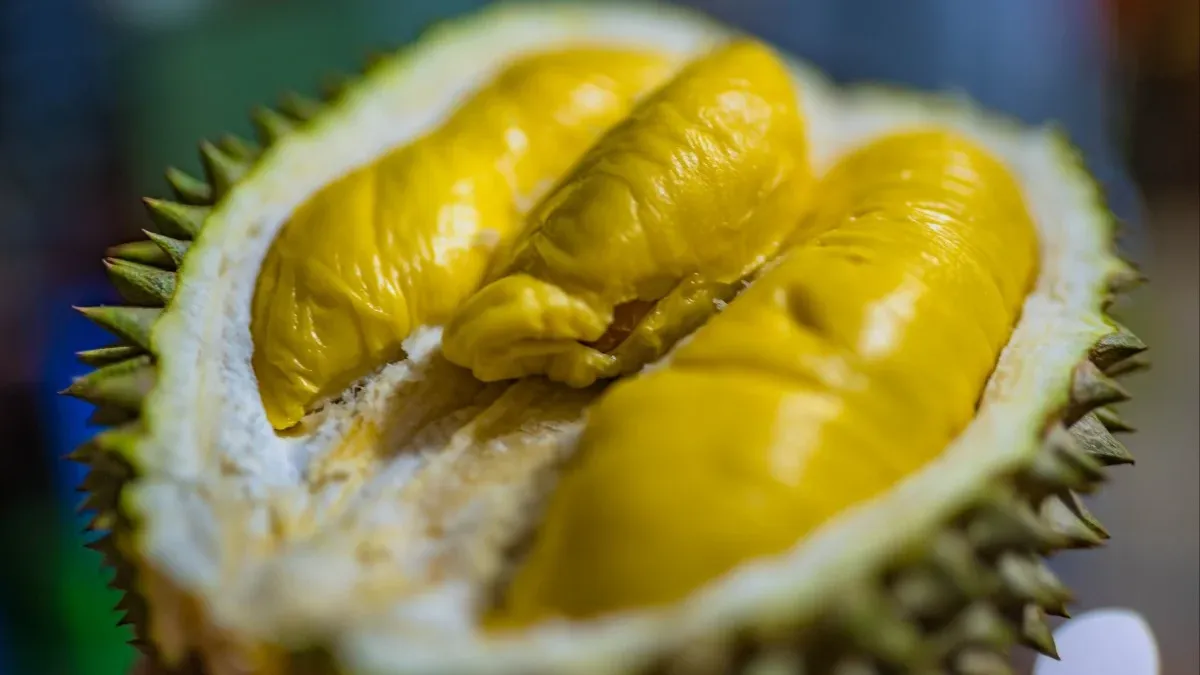Laos is setting its sights on becoming a significant player in the global durian market, targeting an export of approximately 400 tons of the prized fruit by 2026. This ambitious goal, driven by growing demand from China, underscores the country’s push to diversify its agricultural exports and leverage its strategic proximity to one of the world’s largest durian consumers.
A Growing Industry Takes Root
The durian, often dubbed the King of fruits for its rich, creamy texture and distinctive aroma, holds a special place in Southeast Asian cuisine and culture. While Thailand, Malaysia, and Vietnam have long dominated the regional durian trade, Laos is emerging as a contender with its fertile lands and dedicated farmers. As of now, the country boasts 269 hectares of durian plantations, housing nearly 19,000 trees, of which over 3,000 are already bearing fruit. This foundation is set to expand as the nation prepares for increased production and export in the coming years.
On August 8, Elavan Ladpakdee, a representative of the Lao Durian Business Group, highlighted the country’s potential during a technical training event focused on durian cultivation. The session emphasized advanced farming techniques, orchard management, disease prevention, and value-added processing to elevate the quality of Lao durians to international standards. Participants also received guidance on navigating Laos’ agricultural export regulations and securing the necessary documentation for international shipments, signaling a comprehensive approach to market readiness.
China as the Key Market
China, with its voracious appetite for durians, is the linchpin of Laos’ export strategy. In 2023, China imported 1.4 million tons of durians worth $6.7 billion, primarily from Thailand and Vietnam. This burgeoning demand presents a golden opportunity for Laos to capture a share of the market. The geographical proximity to China, coupled with the recently launched Laos-China Railway, offers a logistical advantage, reducing transportation costs and ensuring fresher produce reaches consumers faster.
While Lao durians are yet to secure formal export approval to China, progress is underway. The Director General of the Department of Agriculture has confirmed that market access documentation is being finalized, raising hopes for a breakthrough in the near future. If successful, this could position Laos as a competitive supplier in a market where demand continues to outstrip supply.
Investments and Innovations Fuel Growth
The durian industry in Laos is witnessing a transformation, fueled by both local entrepreneurship and foreign investment, particularly from Chinese stakeholders. Chinese entrepreneurs are increasingly investing in Lao durian farms, eager to meet the rising demand back home. Additionally, the involvement of experienced agricultural professionals is helping to modernize farming practices, ensuring that Lao durians meet the stringent quality standards required for international trade.
One notable initiative includes the planting of 50,000 durian trees on the Bolaven Plateau in 2024, a region historically renowned for coffee production. This venture has introduced a hybrid durian variety, blending traits from Malaysian and local cultivars to produce fruit of exceptional quality. Such innovations are sparking optimism among experts, with some predicting that Laos could soon rank among the top durian producers in Southeast Asia, potentially becoming the fourth-largest globally.
Further bolstering these efforts, the Lao Agricultural Business Association oversees 170 farms spanning 20,000 hectares, currently yielding around 900 tons of durian annually. The association aims to scale production dramatically to 24,300 tons in the coming years, aligning with the country’s broader economic aspirations.
Economic Implications and Trade Ties
The push into the durian market is more than just an agricultural endeavor for Laos; it represents a significant opportunity for economic growth and rural development. The strong trade relationship with China, evidenced by bilateral trade reaching a record $7.1 billion in 2023, provides a robust foundation for this initiative. The Laos-China Railway, a landmark infrastructure project, has further streamlined trade logistics, cutting travel times and enhancing export efficiency between the two nations.
For rural communities in Laos, the durian boom could translate into improved livelihoods and increased income. Farmers, many of whom have traditionally relied on subsistence agriculture or other cash crops like coffee, stand to benefit from the higher market value of durians. This shift could also spur job creation in related sectors, such as processing, packaging, and logistics, contributing to broader economic upliftment.
Challenges on the Horizon
Despite the optimism, challenges remain. Securing export approval from China is a critical hurdle, as stringent phytosanitary and quality standards must be met. Laos must also compete with established players like Thailand, which has long been the dominant supplier of durians to China, benefiting from years of market access and brand recognition. Building a reputation for quality and reliability will be essential for Lao durians to gain a foothold in the competitive landscape.
Additionally, scaling production to meet the 2026 target of 400 tons will require sustained investment in infrastructure, training, and technology. Disease outbreaks, a common risk in durian cultivation, could pose setbacks if not managed effectively. The training programs currently underway are a step in the right direction, but continuous support for farmers will be crucial to ensure consistent output and quality.
Regional Context and Competition
Laos’ entry into the durian export market comes at a time when Southeast Asia’s durian trade is experiencing unprecedented growth. Thailand remains the regional leader, exporting vast quantities to China with well-established supply chains. Vietnam, too, has made significant strides, capitalizing on its proximity and favorable trade agreements. Malaysia, known for premium durian varieties, continues to cater to niche markets willing to pay a premium for quality.
For Laos, differentiation will be key. The country’s focus on hybrid varieties and sustainable farming practices could appeal to environmentally conscious consumers. Moreover, its relatively untapped market offers a sense of novelty, which, if marketed effectively, could attract buyers seeking new sources of high-quality durians.
A Forward-Looking Opportunity
As Laos prepares to ship its first major durian exports by 2026, the industry stands at a pivotal juncture. Success in this endeavor could not only elevate the country’s agricultural profile but also strengthen its economic ties with China, a key partner in the region. The coming years will test Laos’ ability to balance ambitious production targets with the demands of quality and compliance in a highly competitive market.
For now, the fields of the Bolaven Plateau and beyond are abuzz with potential, as farmers and entrepreneurs alike work toward a shared vision of placing Lao durians on the global stage. Whether this King of fruits will crown Laos as a new agricultural powerhouse remains to be seen, but the seeds of change have undoubtedly been sown.















